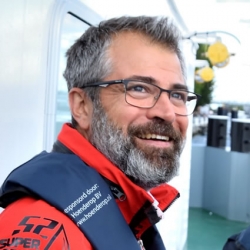Discover more about the topics and technologies that were discussed at the 2019 conference, via a series of exclusive interviews with a selection of our expert speakers.
 Ever wondered what EU grants were available to help fund transport innovation? Richard Ferrer, senior project manager, head of Innovation Team, European Commission, INEA, reveals all...
Ever wondered what EU grants were available to help fund transport innovation? Richard Ferrer, senior project manager, head of Innovation Team, European Commission, INEA, reveals all...
Tell us about your presentation.
The European Commission supports transport research innovation and deployment through the implementation of many funding programs. The Horizon 2020 Research and Innovation program and the Connecting Europe Facility (CEF) are two such programs implemented by the Innovation and Networks Executive Agency (INEA). The total value of the EC grants administered at INEA is currently approaching €33bn. This presentation will highlight elements of each program and examples of topic areas from aviation to IT systems, to alternative fuels and urban mobility. Future funding opportunities will also be highlighted.
How do grants work, and in particular INEA grants?
In the H2020 and CEF programs, most of the innovative projects are led by consortia of private companies, sometimes teamed up with academic entities (universities, public research centers). With regard to the support for sustainable mobility, governments are defining the policy context, and sometimes financial support schemes, which gives some predictability for private investors. In CEF, the latest calls for proposals are based on a limited EU grant (20%), which has to be blended with private investment (loans and equity from private investors) so as to increase the leverage effect of EU public funds in the sustainability of the transportation sector.
INEA makes implementation happen. It implements the transport policy through launching calls for proposals to select the projects having in particular the biggest EU added value. The selection is in two steps: evaluation by external experts, then by an internal panel of the European Commission, and a final decision is made by a selection committee.
How do you ascertain value – i.e. whether your funding was well spent?
The European Commission implements support programs like H2020 and CEF following the agreement of Member States and with a scrutiny right of the European Parliament. Each euro spent on projects by the implementing agencies like INEA is under the strict control of a steering committee and subject to regular audits – financial and of performance – by the Court of Auditors. Moreover, the implementation of programs is subject to a mid-term review to evaluate the accuracy and impacts of selected projects and, when needed, to adjust the priorities. It should be noted that in the next programming period – 2021-2027 – H2020 will be replaced by Horizon Europe, whose program has been co-created with all possible stakeholders through various forms and consultations, which also allowed for citizen engagement.
What technologies or research has resulted from the Horizon 2020 and CEF programs?
The H2020 program is allowing people to take research and innovation from the concept to the initial demonstration, and even to the industrialization phase. It is pretty much focused on forward-looking technologies that will be key enablers to allow systems and services to be implemented in the market. The CEF program often builds on those technologies to support investments in infrastructure, from the industrialization and initial market developments to large-scale roll-out. A typical example is the support for electromobility and hydrogen, from research on fuel cells, batteries and vehicles. We are now supporting the deployment of a high-power recharging network for electric vehicles, and of hydrogen refueling stations.
Who owns the results that come from the grants?
Unless stipulated differently in a grant agreement, the ownership of the results, including industrial and intellectual property rights, and any documents or reports relating to it, are vested in the beneficiaries of the EU grants. Under both CEF and H2020, we are paying attention, of course, to the possibility of disseminating the results as much as possible so that there is an incremental effect, outside the limited scope of the actions financed.
What funding opportunities will be available in the future?
For H2020, a budget is still available regarding, for example, themes like ‘mobility for growth’, ‘batteries’, ‘automated road transport’ and ‘green vehicles’. All information is available on INEA’s website. With regard to CEF, two calls for proposals have opened recently. One, related to inland and maritime ports, allows for projects on alternative fuels to be financed. Another one, called Blending Facility, is a permanently open call to support decarbonized and sustainable transport through the deployment of infrastructure supplying alternative fuels, in particular for urban public transport, including support for vehicles. Again, more information can be found on our website, here.
Don’t miss Richard Ferrer’s presentation, titled The role of the Innovation and Networks Executive Agency in supporting research and innovation on Tuesday, December 10 at 09:30hrs as part of Stream 7: Quantum Effects Through Big & Small Changes. See the full conference program here. Register for your conference pass here.